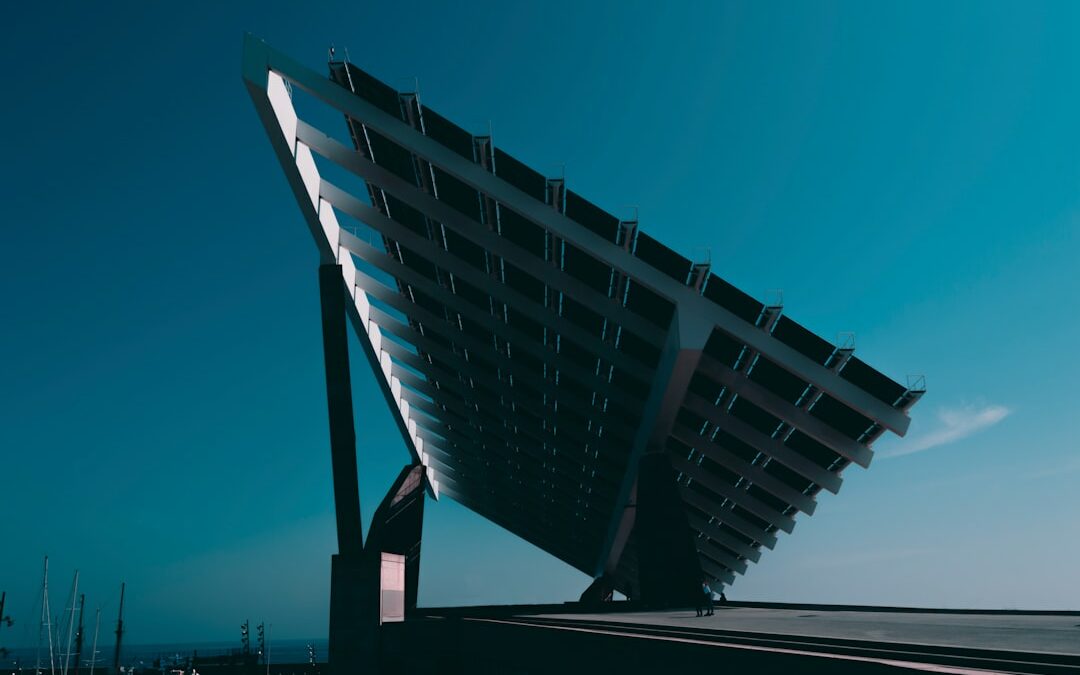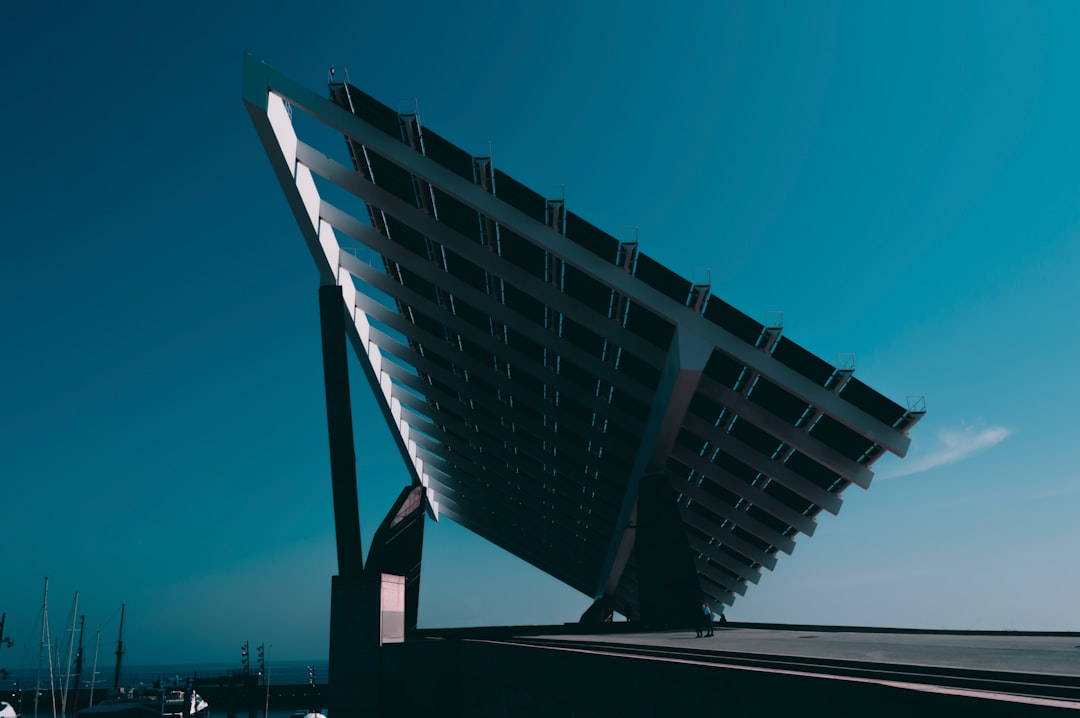How to build an energy efficient home begins with a clear plan and understanding of what makes a home energy efficient. At its core, it involves:
- Selecting the right materials and construction techniques to reduce energy consumption.
- Incorporating renewable energy sources such as solar panels to meet your home’s energy needs sustainably.
- Optimizing your home design to take advantage of natural light and heat, reducing reliance on artificial lighting and heating.
- Ensuring your home is properly insulated and sealed to keep the desired temperature indoors without excessive energy use.
In the quest for creating your dream home, it’s essential to intertwine the vision of elegance with sustainability. This guide is drafted especially for families and individuals in the PA, NY, NJ area aiming for a custom, energy-efficient modular home that encapsulates quality, design, and a seamless building process.
Crafting an energy-efficient home is not just about slapping on some solar panels and considering it done. It’s a holistic approach that impacts every choice you make, from the planning and design stages through to the daily operation of your home. The goal? To create a space that is not only beautiful and tailored to your lifestyle but also kind to your wallet and the planet over the long term.
By understanding and applying these principles, you are not only guaranteeing a space that meets your aesthetic and functional needs but also securing a future where your home continues to save energy and money.
Understanding Energy Efficiency in Homes
When we talk about how to build an energy-efficient home, we’re focusing on making sure that every part of your house uses as little energy as possible while still keeping you comfortable. Let’s dive into the main areas where energy efficiency plays a big role: Heating and cooling, Hot water, Appliances, Lighting, and Complex systems.
Heating and Cooling
This is a big one. Most of the energy your home uses goes into keeping the temperature just right. Choosing the right furnace or air conditioning unit can make a huge difference. You want systems that do the job without wasting energy. Think about it like a car that uses less gas to go the same distance.
Hot Water
We use hot water every day, and it takes energy to heat it up. Using a tankless water heater can save energy because it heats the water only when you need it, instead of keeping a whole tank hot all the time. It’s like turning off a light when you leave the room.
Appliances
Not all appliances are created equal. Some are energy hogs, and others are energy sippers. When you choose appliances, look for the Energy Star label. It’s like picking a snack that’s good for you instead of junk food.
Lighting
Switching to LED bulbs is a no-brainer. They use way less energy than old-school bulbs and last a lot longer. It’s like if your phone battery lasted for days instead of hours.
Complex Systems
This is about the big picture – how all the electrical and mechanical systems in your house work together. A smart thermostat can help here by automatically adjusting the temperature based on your habits. It’s like having a personal assistant who turns off the lights and lowers the heat when you’re not home.
By focusing on these areas, you’re taking big steps toward building an energy-efficient home. It’s all about making smart choices that add up to big savings on your energy bill and help protect the planet too.
In the next section, we’ll look at some specific features that can make your home even more energy-efficient.
How to Build an Energy Efficient Home
Building an energy-efficient home is not just a trend; it’s a smart way to save money and reduce your carbon footprint. Here’s how you can incorporate energy-saving features into your home:
Solar Panels
Harnessing the sun’s power through solar panels is a game-changer for energy efficiency. They convert sunlight into electricity, reducing your reliance on traditional power sources. Yes, the initial setup can be pricey, but the long-term savings on your energy bills are worth it. Plus, you’re doing the planet a big favor.
Tankless Water Heaters
Tankless water heaters are magic for saving energy. Unlike traditional water heaters, they heat water on demand, which means no energy wasted on keeping a tank of water hot 24/7. They’re compact, last longer, and can cut your water heating bill significantly.
Energy Star Appliances
When shopping for appliances, look for the Energy Star label. These products meet strict energy efficiency guidelines set by the EPA. From refrigerators to washing machines, opting for Energy Star appliances can reduce your home’s energy use and greenhouse gas emissions.
LED Lighting
Swap out those old light bulbs for LEDs. They use at least 75% less energy and last 25 times longer than incandescent lighting. It’s one of the easiest and most effective changes you can make.
Spray Foam Insulation
Good insulation is key to an energy-efficient home. Spray foam insulation expands to fill cracks and crevices, reducing air leaks. It’s more effective than traditional insulation materials, keeping your home warm in winter and cool in summer.
Smart Home Devices
Smart home devices like thermostats, lights, and plugs can learn your habits and adjust your home’s energy use accordingly. Imagine your home automatically turning off unnecessary lights and optimizing temperature for energy savings. It’s not just convenient; it’s cost-effective.
Water Conservation
Every drop counts. Installing low-flow fixtures in showers and faucets reduces water use without sacrificing pressure. Consider a rainwater harvesting system for watering plants or flushing toilets. And remember, fixing leaks promptly can save gallons of water.
Landscaping
Thoughtful landscaping can naturally regulate your home’s temperature. Planting trees for shade, using ground cover to cool the area, and choosing native plants that require less water are all smart moves. Plus, a well-designed yard adds curb appeal.
By integrating these features, you’re on your way to building an energy-efficient home that saves money and is kind to the environment. Every small step towards efficiency contributes to a bigger impact on your wallet and the planet.
In the next section, we’ll dive deeper into the key features that define an energy-efficient home, enhancing comfort and reducing costs even further.
Key Features of an Energy-Efficient Home
Creating an energy-efficient home is not just about adding a few eco-friendly features. It’s about integrating systems and materials that work together to reduce energy consumption and increase comfort. Let’s break down the essential components that make up an energy-efficient home.
Insulation and Air Sealing
Spray Foam and Fiberglass: Two heroes in insulation. Spray foam expands to fill cracks and gaps, making it excellent for air sealing. It’s like putting a warm, snug hat on your home. Fiberglass, on the other hand, is like a thick, cozy blanket. It’s great for filling in walls and attics. Together, they keep the warm air in during winter and out during summer.
Why It Matters: Good insulation and air sealing mean your heating and cooling systems don’t have to work as hard. This saves energy and money.
Efficient Heating and Cooling Systems
Furnaces and Air Conditioning Units: Not all systems are created equal. Look for ones with a high Energy Star rating. These units use less energy to heat or cool your home. It’s like choosing a car that gets more miles per gallon.
Tip: Regular maintenance keeps these systems running efficiently. Think of it as keeping the engine tuned up in that energy-efficient car.
High-Performance Windows and Doors
Energy Star Products and Storm Windows: Windows and doors can be weak spots in a home’s armor against energy loss. Energy Star-rated products help keep the heat where you want it. Adding storm windows can also improve efficiency, acting as an extra layer of insulation.
The Impact: High-performance windows and doors can significantly reduce energy bills by keeping your home’s temperature more stable.
Renewable Energy Sources
Solar Panels and Wind Energy: Imagine if your home could generate its own clean energy. Solar panels and wind turbines make this possible. They can reduce or even eliminate your reliance on the grid, especially when used together.
The Future Is Now: As technology improves, these renewable energy sources become more affordable and accessible for homeowners.
Water Efficiency
Tankless Water Heaters and Low-Flow Fixtures: Water heating is a major energy user in homes. Tankless water heaters heat water on demand, so you’re not wasting energy heating water you’re not using. Low-flow fixtures reduce water use, which means less energy for heating.
Every Drop Counts: Using less water not only saves energy but also reduces your water bill. It’s a win-win.
By focusing on these key features, you’re not just building a house; you’re creating a sustainable, energy-efficient home. From the insulation in your walls to the energy source powering your lights, every choice matters. With advancements in technology and a push towards sustainability, companies like Shorten Homes are at the forefront of designing homes that are not only beautiful but also kind to the planet and your wallet.
In the next section, we’ll explore how to design your home for maximum efficiency, taking into account everything from the position of your home on its lot to the materials used in construction. Stay tuned for more insights on how to build an energy-efficient home.
Designing for Efficiency
When it comes to how to build an energy efficient home, the design phase is where you can make big impacts with thoughtful decisions. Let’s dive into how you can use the sun, innovative framing, and smart landscaping to create a home that’s both beautiful and energy-smart.
Passive Solar Home Design
Imagine your home soaking up the sun’s heat during the winter and staying cool and breezy during the summer. That’s what passive solar home design can do. It’s all about positioning your home and choosing windows in a way that maximizes sunlight when you need warmth and minimizes it when you don’t.
- Climatic Conditions: Look at the weather patterns in your area. In cooler climates, you’ll want to capture as much sun as possible. This might mean having large, south-facing windows. In hot climates, the goal shifts to shading these windows and promoting airflow to cool the home down.
- Site Conditions: The slope of the land, nearby structures, and existing vegetation can all impact your home’s solar gain. By carefully analyzing your site, you can design your home to work with these elements, not against them.
Advanced House Framing
Also known as optimum value engineering (OVE), advanced house framing reduces lumber use and waste. But how does this relate to energy efficiency? It’s simple: less lumber means more room for insulation, and more insulation means a tighter, more energy-efficient envelope for your home.
- Optimum Value Engineering: This technique focuses on structuring the frame of your home to support its weight efficiently while maximizing insulation space. It’s a win-win for both the environment and your heating and cooling bills.
Cool Roofs and Green Landscaping
The materials you choose for your roof and the plants you select for your yard can significantly affect your home’s energy consumption.
- Reflective Materials: Cool roofs are designed with materials that reflect more sunlight and absorb less heat than a standard roof. This can significantly reduce cooling costs in hot climates.
- Native Plants: When it comes to landscaping, going native is not just about beauty or ease of maintenance. Native plants are adapted to your local climate and will typically require less water and care. Plus, strategically placed trees and shrubs can provide natural cooling shade and windbreaks, further reducing your home’s energy needs.
By taking a holistic approach to your home’s design, considering everything from the sun’s path across your property to the type of framing lumber you use, you can create a home that’s not only energy-efficient but also comfortable and beautiful. The goal is to work with nature, not against it, to achieve a living space that’s in harmony with its surroundings. Shorten Homes understands this balance and strives to incorporate these principles into every home we build, ensuring that your new home is a model of efficiency and sustainability.
Next, we’ll answer some frequently asked questions about building and living in an energy-efficient home, including tips for retrofitting older homes, the resale value of energy-efficient homes, and the potential savings you can expect. Stay tuned for valuable insights that could help you make informed decisions about your future home.
FAQs About Building an Energy-Efficient Home
When it comes to how to build an energy efficient home, there are many questions homeowners and potential homebuilders have. Let’s dive into some of the most common queries.
How Can I Make an Old Home More Energy-Efficient?
Making an old home more energy-efficient doesn’t have to be a daunting task. Start with small, manageable updates:
- Replace old light bulbs with LED lights. They use less energy and last longer.
- Upgrade to Energy Star appliances when it’s time to replace your old ones. These appliances are designed to use the minimum amount of energy necessary to complete their tasks.
- Add weather stripping around doors and windows to prevent air leaks. This is a simple and cost-effective way to improve your home’s insulation.
- Consider adding more insulation to your attic or walls. This can help keep your home warmer in the winter and cooler in the summer.
- Install low-flow fixtures to reduce water usage, which can also save energy.
Do Energy-Efficient Homes Sell Better?
Yes, they do. Energy-efficient homes often sell for a higher price than standard homes. Buyers are not only looking for homes that will save them money on utility bills but are also increasingly concerned about their environmental impact. Features like solar panels, Energy Star appliances, and high-efficiency HVAC systems are attractive to modern homebuyers who prioritize sustainability alongside comfort and design.
How Much Money Will I Save by Living in an Energy-Efficient House?
The amount of money you’ll save by living in an energy-efficient home varies based on several factors, including the size of your home, the efficiency of your appliances, and your personal energy usage habits. However, the savings can be significant. For example, Energy Star appliances can save up to 30% on electricity bills and LED lighting uses at least 75% less energy than incandescent lighting.
Furthermore, if you opt for renewable energy sources like solar panels, you could significantly reduce your utility bills or even eliminate them. The initial investment in energy-efficient features and renewable energy technology can pay off in the long run through reduced utility costs and potential tax incentives.
Remember that every small change you make towards building or remodeling an energy-efficient home contributes to a larger impact on both your wallet and the environment. Whether you’re upgrading an old home or designing a new one from scratch, incorporating energy-efficient features is a wise investment in the future.
Conclusion
Building an energy-efficient home is not just a trend; it’s a commitment to a sustainable future and a wise financial decision. At Shorten Homes, we understand the importance of this commitment. We’ve been at the forefront of designing and building custom modular homes that not only meet but exceed energy efficiency standards. Our approach combines innovative design, advanced building techniques, and the use of sustainable materials to create homes that are both beautiful and energy-efficient.
Our journey in the construction industry, spanning over 46 years, has taught us the value of customer satisfaction and the importance of building homes that are not only aesthetically pleasing but also highly functional and energy-efficient. We’ve built over 5,000 homes, each designed to harness the benefits of energy efficiency, from advanced framing techniques that reduce thermal bridging to the use of Superior Walls® for foundation, ensuring a well-insulated and sealed home from the ground up.
We believe in the power of renewable energy and have integrated solar panels and other renewable energy systems into our designs, making our homes not just energy-efficient but also capable of generating their own clean energy. Our homes are designed to take full advantage of passive solar heating and cooling, reducing the need for artificial heating and cooling and significantly lowering energy costs.
Our commitment to sustainability extends beyond the construction of new homes. We also offer guidance on how to make existing homes more energy-efficient, from upgrading to Energy Star appliances to incorporating tankless water heaters and LED lighting. Our team of professionals is dedicated to helping you find the best solutions to reduce your home’s energy consumption and environmental footprint.
As we look towards the future, Shorten Homes remains committed to innovation and excellence in the field of energy-efficient home construction. We invite you to explore our portfolio of luxurious and energy-efficient modular homes and discover how we can help you build the energy-efficient home of your dreams. Join us in making a positive impact on the environment and your energy bills.
For more information on our energy-efficient home designs and to start your journey towards a sustainable future, visit our service page. Together, let’s build a greener, more sustainable world, one home at a time.
Shorten Homes – Your partner in building energy-efficient homes for a sustainable future.





